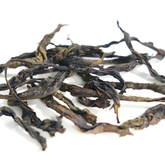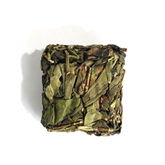How to Use Discarded Tea Residue to Absorb Odors|NPTEA
For true tea enthusiasts, the daily consumption of tea leaves can be staggering — from morning wake-up green tea to robust afternoon Pu'er and soothing evening herbal blends... These discarded tea grounds actually hold unexpected superpowers. With just three simple steps: dry → bag → deploy, you can transform used tea residue into "natural purifier packs" for your car. Not limited to vehicles, they also work in fridges and ovens to tackle odors effortlessly – a solution that’s both eco-friendly and budget-friendly.
Three Key Uses of Tea Bags in Your Car
| Scenario | How It Works |
| New car smell(leather/plastic odor) | Tea polyphenols absorb VOCs like formaldehyde and benzene, reducing harsh chemical smells. |
| Food, smoke, or pet odors | Jasmine or citrus-flavored teas release natural fragrances to neutralize stubborn odors. |
| Musty smell after rain | Tea absorbs moisture, preventing mold growth and damp odors. |
Science Backing:
-
Kyoto University study: Green tea extract absorbs 62% of ammonia (similar to pet urine odor).
-
Black tea’s porous structure provides 300-600 m²/g surface area (like activated charcoal), trapping odor molecules effectively.
Why Tea Leaves Are Nature’s Odor Absorbers
Tea leaves absorb odors primarily due to their physical structure and chemical composition. Their microscopic pores act like tiny vacuum cleaners, trapping odor molecules from the air. Chemical compounds in tea, such as specific fatty acids, also play a key role, making tea highly sensitive to odors. Keeping them dry enhances their odor-absorbing capacity. In short, tea’s porous structure and unique chemistry make it a natural odor-neutralizing expert.
| Characteristics | How Tea Absorbs Odors |
| Porous, Sponge-like Structure | The internal structure resembles a sponge with numerous micropores, increasing surface area to grab and lock away odor-causing molecules in the air. |
| Van der Waals Forces | Similar to tiny magnets, molecules on the tea's surface naturally attract and capture odor molecules floating in the air. |
| Specific Chemical Constituents | Components like palmitic acid possess natural properties, effectively binding with and neutralizing unwanted smells. |
| Dryness | When dry, tea's pores remain unoccupied by water, providing prime conditions for absorbing moisture and odors from the air. |
| Environmental Factors | Warmth activates gas molecules, making them easier to trap; however, high humidity can fill these pores with moisture, temporarily reducing odor absorption capacity. |
Easy Guide to Using Tea Leaves for Odor Removal Steps
First, collect tea residue or tea bags after daily tea drinking and let them dry completely. Then put the dried tea residue into breathable bags; then place these tea residue bags in refrigerators, car interiors, or any odorous spaces. Note: Regularly check the dryness of the tea bags – if damp, replace them promptly.
| Step | What to Do | |
| 1. Dry Tea Leaves | Collect tea leaves after use and let them dry completely. | |
| 2. Bag It Up | Put the dried tea leaves into a breathable bag or container. | |
|
Put the tea bag in areas like fridges or cars to remove odors. | |
| 4. Regular Refresh | Swap out or re-dry the bags as needed for continuous freshness. |
Conclusion
Don’t toss used tea leaves—repurpose them into natural odor-absorbing tea bags! Perfect for cars, refrigerators, or any odor-prone spaces, tea’s porous structure and chemical composition allow it to trap harmful gases and foul-smelling molecules. Using tea bags as deodorizers is not only eco-friendly but also cost-effective, offering a simple yet powerful solution for fresher air.
SEE MORE ABOUT CHINESE TEAS
If you have questions about selecting tea:
Learn-more-about-chinese-tea
If you have questions about the benefits of tea:
Health-benefits-of-chinese-tea
If you have questions about brewing tea:
How-to-brew-loose-leaf-tea






